Understanding Finasteride: Mechanism and Effectiveness
Finasteride, a popular hair loss medication, primarily functions by inhibiting the conversion of testosterone to dihydrotestosterone (DHT), a hormone that contributes to hair follicle miniaturization. By lowering DHT levels, finasteride effectively slows hair loss and can even promote regrowth in some users. Its efficacy has been demonstrated in numerous clinical trials, where a significant percentage of participants experienced improved hair density and reduced shedding. Despite its oral administration posing some concerns, finasteride remains a cornerstone treatment due to its substantial success rate.
| Mechanism | Effectiveness |
|---|---|
| Inhibits DHT production | 60-90% report hair regrowth or stabilization |
| Lowers DHT levels | Significant improvement in hair density |
Topical Vs. Oral: Different Treatment Modalities

When it comes to addressing hair loss, the choice between topical and oral treatments presents a compelling decision. Finasteride, commonly administered orally, works by inhibiting the enzyme 5-alpha-reductase, reducing DHT levels and slowing hair loss. This systemic approach ensures comprehensive exposure throughout the body, potentially leading to more effective results. However, the oral route also raises concerns due to possible systemic side effects.
In contrast, topical treatments target specific areas, minimizing systemic absorption and associated risks. This appeals to those cautious about side effects. While finasteride has been explored in topical formulations to reduce unwanted effects, these are still less common than the oral version.
Considering these modalities, individuals have the opportunity to balance efficacy with personal health preferences, selecting a treatment mode that aligns with their comfort and lifestyle.
Comparing Finasteride with Minoxidil: Benefits and Drawbacks
Finasteride, primarily available in oral form, functions by inhibiting the enzyme responsible for converting testosterone to dihydrotestosterone (DHT), a key factor in male pattern baldness. This mechanism makes it effective in preventing further hair loss and promoting regrowth. Minoxidil, on the other hand, is a topical treatment believed to widen blood vessels, thereby increasing blood flow and nutrient delivery to hair follicles. While minoxidil may offer an easier, non-prescription option, it often lacks the systemic efficacy of finasteride, which targets the hormonal roots of hair loss. However, unlike minoxidil, finasteride requires a prescription and can have systemic side effects, such as sexual dysfunction, affecting user preference and treatment adherence.
Natural Alternatives to Finasteride: an Overview

In the realm of hair loss solutions, the appeal of natural alternatives is gaining momentum. Saw palmetto, for instance, is often heralded as a herbal counterpart to finasteride, boasting the ability to inhibit the conversion of testosterone to dihydrotestosterone (DHT). Similarly, pumpkin seed oil emerges as another plant-based option, packed with nutrients that may bolster hair health. For those skeptical of pharmaceuticals, these natural remedies present an enticing avenue. Although lacking the extensive scientific backing that finasteride enjoys, they offer gentler, albeit varied, effects.
Cost Comparison: Finasteride and Other Treatments
When considering the financial aspect of hair loss treatments, it's essential to weigh the cost-effectiveness of finasteride against alternatives. While finasteride often shows significant results, its price can vary depending on the brand and dosage. Generic versions tend to be more economical. In contrast, other treatments like minoxidil, which can be purchased over-the-counter, offer a different pricing structure. Natural alternatives may appear cost-effective initially, but they might require longer use to see noticeable results.
Below is a table illustrating the range of costs associated with various treatments:
```html
| Treatment | Approximate Monthly Cost (USD) |
|---|---|
| Finasteride | 25 - 75 |
| Minoxidil | 10 - 40 |
| Natural Alternatives | Varies Substantially |
The decision on which treatment to pursue may depend not only on the efficacy but also on one's budgetary constraints. Those in search of reliable outcomes often opt for finasteride despite a potentially higher cost, recognizing the value of investing in a proven long-term solution.
Side Effects: Finasteride Compared to Other Therapies
When discussing treatments for hair loss, understanding side effects is crucial. Finasteride, an oral medication, primarily targets hair loss by inhibiting the conversion of testosterone to dihydrotestosterone (DHT). However, this mechanism can result in side effects such as reduced libido, erectile dysfunction, and depression, affecting a minority of users. In comparison, minoxidil, a popular topical treatment, might cause side effects like scalp irritation or unwanted facial hair growth. Meanwhile, natural alternatives, such as saw palmetto or pumpkin seed oil, have fewer documented side effects but may also offer variable effectiveness. Balancing efficacy and potential adverse effects is fundamental when selecting the optimal hair loss therapy.

